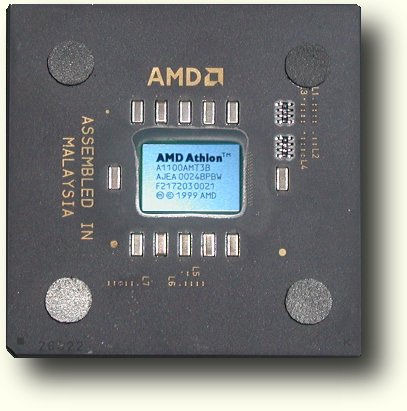AMD's Latest Thunderbird: SocketA Athlon at 1.1 GHz
Introduction
I doubt that I am telling you anything new by pointing out that the last 12 months saw a major change of who is supplying the majority of high-end x86 processors. While Intel used to own this position for over a decade, AMD has successfully taken that place away from once almighty Chipzilla and the guys in Satan Clara (yeah, I know it's "Santa Clara ") can only hope that the upcoming Pentium 4 will finally change this fact.
The major problem that keeps Intel from playing a significant role in the Giga-Hertz-and-beyond-segment is not an inability to actually release processor solutions that would be fast enough, but Intel's utter inability to provide those wonderful products in actual volume. When AMD released its Giga Hertz Athlon in March this year Intel was able to counter with the release of its Giga Hertz Pentium III two days later (please read The Giga Battle and The Giga-Battle Part 2 ). However, until this very day Intel continued its inability to ship this processor in volume and only recently you could finally find some Pentium III 1 GHz processors at retailer shops. In those last 5 months the vast majority of 1 GHz systems shipped with AMD's 'Athlon inside', which made many journalists use the term 'paper release' for Intel's Giga Hertz Pentium III release.
AMD started to take its newly achieved position as provider of super-fast x86-processors that seriously, that it didn't panic after Intel's recent release of the Pentium III at 1.13 GHz on July 31. Instead of launching their counterpart, the Athlon at 1.1 GHz, right away, it continued to ramp up production for this product and stick to the planned release date of August 28, 2000. This is why you can find this new AMD processor at PriceWatch already now. Different to the anyway rather flaky Pentium 1.13 GHz from Intel, you can actually either buy Athlon 1.1 GHz processors on their own or in systems right now.
The Specs Of AMD's New Athlon/Thunderbird Processor
I don't want to bore you with stuff you have read and heard a hundred times before, so I'll keep myself short. AMD's new Athlon 1100 is another version of AMD's Thunderbird core . This core is based on the original Athlon architecture, but different to its older brother for SlotA it comes with its L2-cache combined with the CPU-core on the same piece of silicon. This silicon piece, or 'die' happens to consist of about 37 million transistors, its package is the now well-known 462-pin SocketA-PGA and its favorite platform is based on VIA's Apollo KT133 chipset.
The new 1.1 GHz Athlon requires the same core voltage as the Athlon/Thunderbird at lower clock speeds, which is 1.75 V. Its thermal power dissipation is 1 W higher than what we know from the Thunderbird at 1 GHz, which in return means that you won't need a significantly altered cooling solution over what is used for the first Giga-Thunderbird.
AMD's new Athlon 1100 has one invaluable advantage over Intel's recent Pentium III 1.13 GHz. Different to Intel's desperate 'beyond-giga ' solution the new Athlon does not require anything different than its less powerful brothers. The Athlon 1100 runs on ANY SocketA platform, while Intel guarantees the, by me yet unseen, 'stability' of the 1.13 GHz Pentium III only on ONE specially modified VC820 motherboard. Athlon 1.1 GHz is allowed to get as hot as all its slower siblings, while Intel tries to insure some reliability of it's 1.13 GHz solution by specifying the maximal 'junction temperature' down to 62 degrees centigrade, which in return requires massive cooling solutions.
Finally there is one more reason to favor AMD's new processor - the price. I already mentioned that I found Athlon 1100 at PriceWatch . With 719 US-Dollars it's almost $250 cheaper than the best offer for a Pentium III 1 GHz at US$ 962! I guess it's needless to add that no retailer in the world is selling a Pentium III 1.13 GHz. This miraculous piece of, excuse me, silicon-trash only ships in a few OEM boxes for the gentleman who's got really everything, even the silver telephone dialer.
Get Tom's Hardware's best news and in-depth reviews, straight to your inbox.

